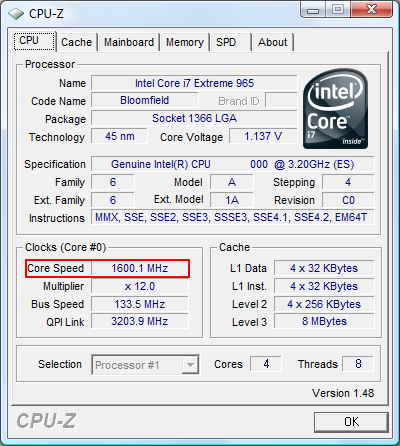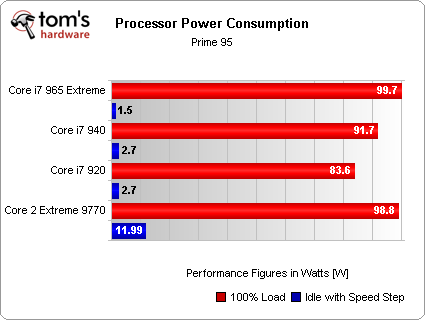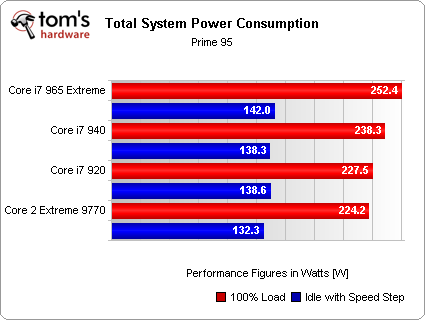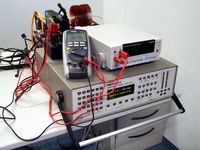UPDATE: Core i7: Blazing Fast, O/C Changes
Platform Power Consumption--Higher Than Core 2
SpeedStep with only 1.6 GHz
As a result of the Overspeed Protection feature, the power consumption of the Core i7 can not exceed 130 watts unless the feature is turned off; the specified TDP is the same for all three models launching today. The core of the Core i7 processors can reach up to 100° Celsius before it begins to reduce its clock speed and voltage with the help of its Thermal Monitor 2 (to prevent damage from overheating). Its SpeedStep feature reduces the multiplier to 12x when the cores are idle, lowering the CPU clock speed to 1.60 GHz. According to CPU-Z, the core voltage is simultaneously reduced to 1.137 volts.

Power Consumption
The Core i7 and Intel motherboard worked together very smoothly, with the board able to switch off some of its voltage regulation modules when idle, using the SpeedStep feature. Thanks to its improved power saving features, the Core i7 only draws between 1.5 and 2.7 watts when idle—that is a marked improvement over the Core 2 QX9770, which draws more than four times as much power. Under full load, the two processors are tied, with each consuming about 100 watts. Therefore, the Core i7 is no worse, but also no better than the Core 2 under load (not counting its performance per watt).

At the system level, the picture isn’t quite as rosy for the Core i7. Under full load, the Nehalem system draws 28 watts more than our Core 2 rig, and even when idling, its power consumption is still 10 watts higher. Since the power consumption of the memory interface is included in the CPU’s overall power consumption, that begs the question of which component on the motherboard is drawing the extra power. After all, our Core i7 system only has to power one extra component: a DDR3 module that draws between 4 and 5 W.

Get Tom's Hardware's best news and in-depth reviews, straight to your inbox.
Current page: Platform Power Consumption--Higher Than Core 2
Prev Page UPDATED: Extreme Edition Gets Unlocked Turbo Boost Next Page Analysis--Core i7 16% Faster Than Core 2